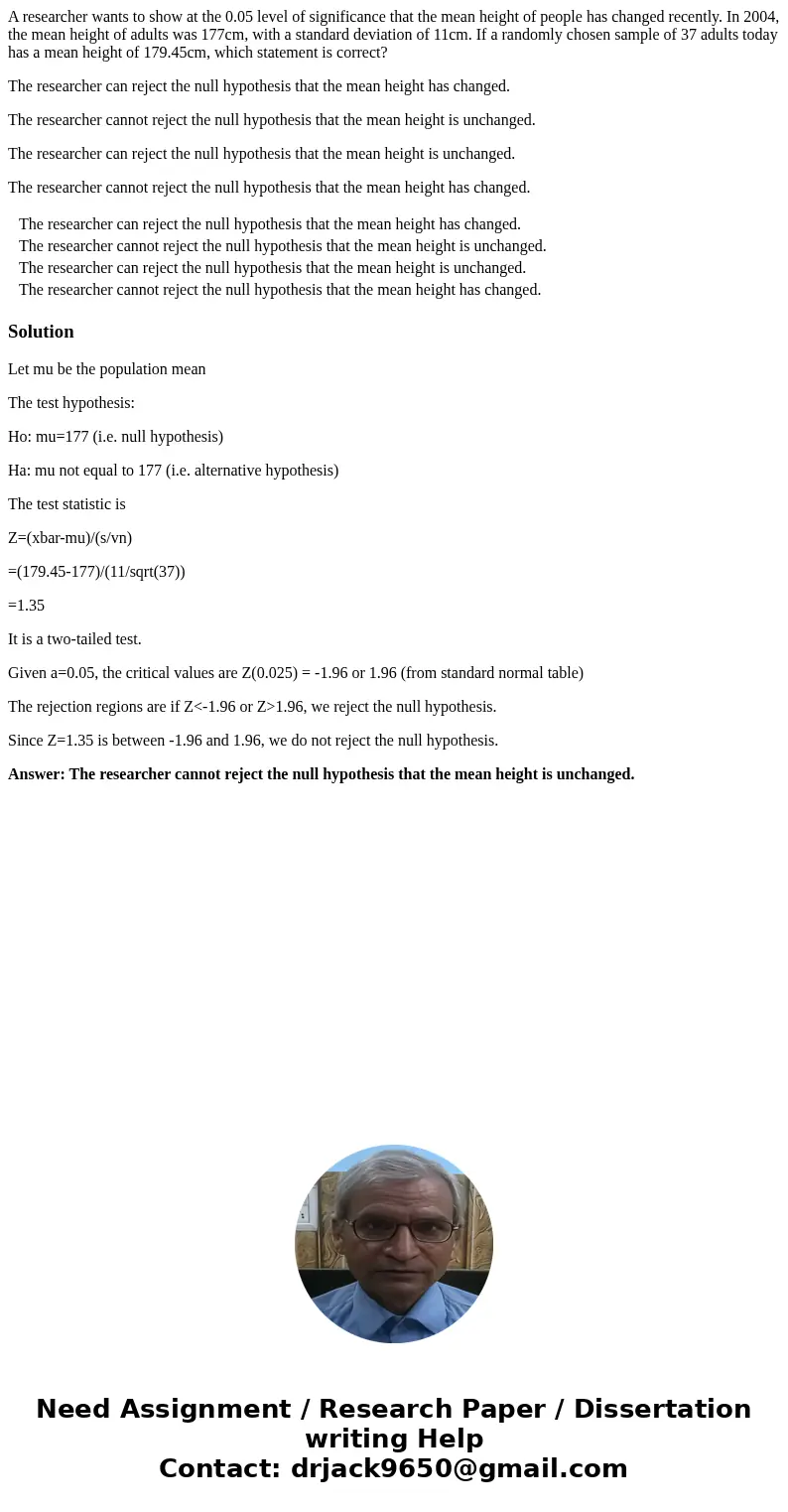A researcher wants to show at the 005 level of significance
A researcher wants to show at the 0.05 level of significance that the mean height of people has changed recently. In 2004, the mean height of adults was 177cm, with a standard deviation of 11cm. If a randomly chosen sample of 37 adults today has a mean height of 179.45cm, which statement is correct?
The researcher can reject the null hypothesis that the mean height has changed.
The researcher cannot reject the null hypothesis that the mean height is unchanged.
The researcher can reject the null hypothesis that the mean height is unchanged.
The researcher cannot reject the null hypothesis that the mean height has changed.
| The researcher can reject the null hypothesis that the mean height has changed. | ||
| The researcher cannot reject the null hypothesis that the mean height is unchanged. | ||
| The researcher can reject the null hypothesis that the mean height is unchanged. | ||
| The researcher cannot reject the null hypothesis that the mean height has changed. |
Solution
Let mu be the population mean
The test hypothesis:
Ho: mu=177 (i.e. null hypothesis)
Ha: mu not equal to 177 (i.e. alternative hypothesis)
The test statistic is
Z=(xbar-mu)/(s/vn)
=(179.45-177)/(11/sqrt(37))
=1.35
It is a two-tailed test.
Given a=0.05, the critical values are Z(0.025) = -1.96 or 1.96 (from standard normal table)
The rejection regions are if Z<-1.96 or Z>1.96, we reject the null hypothesis.
Since Z=1.35 is between -1.96 and 1.96, we do not reject the null hypothesis.
Answer: The researcher cannot reject the null hypothesis that the mean height is unchanged.

 Homework Sourse
Homework Sourse